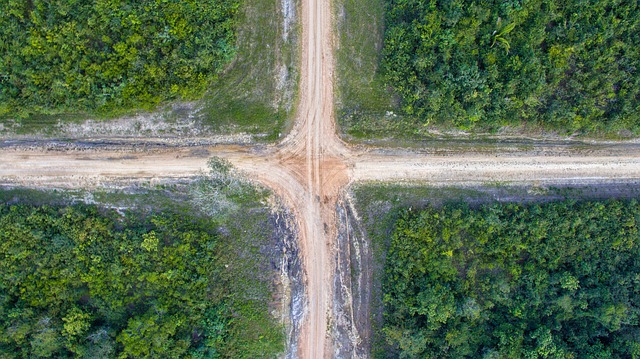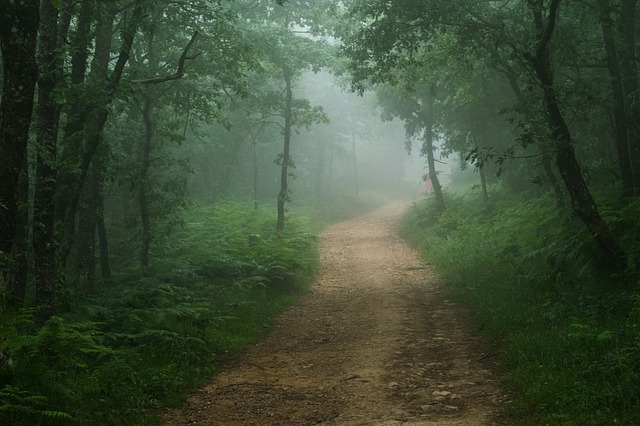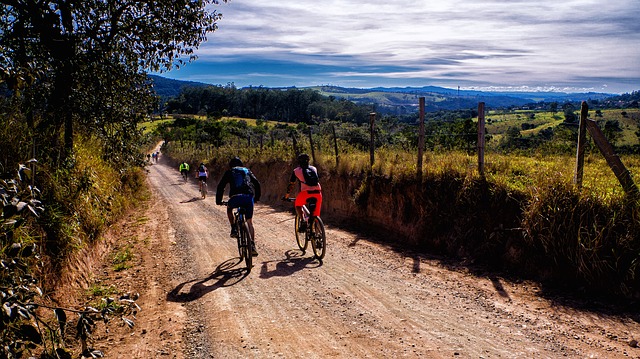THE 9 LESSER-KNOWN WAYS OF ST. JAMES
Xavier Rodríguez PrietoToday we propose discovering the 9 lesser-known Ways of St. James, and we tell you how many stages you can do it in by bicycle.
There are many routes of the Camino de Santiago to do by bicycle. The most well-known route of the pilgrimage to Santiago de Compostela is, without a doubt, the Camino Francés. It was the first route of the Camino de Santiago to be recognized by UNESCO and is, by far, the most traveled.
Most bicigrinos opt for it due to its great popularity, extensive services, and major tourist attractions. But this does not mean that to do the Camino, we must take this route, far from it. There are countless routes to do the Camino de Santiago.
The Camino can be started, as it has always been said since its beginnings, from the doorstep of one’s own home. This is why, in this post, we will introduce you to some of those other lesser-known routes of the Camino de Santiago. So, if you are planning to do the Camino de Santiago by bicycle and are interested in discovering alternative, lesser-known, and less traveled routes, stay tuned as we explain them to you below.
Lesser-Known Routes of the Camino de Santiago

We will start with those routes of the Camino that, starting from different points in Spain and France, end up merging with the Camino Francés to reach Santiago de Compostela together.
Route of the Camino de Santiago: Ruta de la Lana
This route of the Camino de Santiago starts from Alicante, heading towards Cuenca and passing through Guadalajara to finally merge with the Camino Francés in Burgos.
Its name derives from its use of ancient paths utilized for livestock and the wool trade. Merchants transported this product from Castilla la Mancha, the major producer of this good during the 16th and 17th centuries, to Burgos, the main commercial capital of wool at that time.
The route runs in the opposite direction of many of the paths that El Cid Campeador traveled during his journey of exile, imbuing its roads with history, marked by the clear imprint left by the relationships, both good and not so good, between Christians and Muslims.
Even now, it is a very little-known and little-traveled route, despite being well-signposted and having sufficient infrastructure for pilgrims.
Distance (from Alicante to Burgos): approx. 400 km
Possible stages by bicycle: 9 to 11
Route of the Camino de Santiago: Camino de Requena
The Camino de Requena starts from Valencia to join the Ruta de la Lana in Monteagudo de las Salinas. It takes its name from the comarca of Requena, in the province of Valencia, where it begins.
This historic route served in the past as a commercial exchange route between the Levante coast and the plateau.
The first part begins with a gentle and manageable ascent, followed by certain elevation changes, especially in the final part.
It does not yet have public hostels, but it offers a wide range of other types of accommodations for pilgrims.
Distance (from Valencia to Monteagudo): approx. 200 km
Possible stages by bicycle: 3 to 5
Route of the Camino de Santiago: Camino Aragonés
Of the main pilgrimage routes that come from France and enter Spain, three of them merge before reaching the Spanish town of Roncesvalles and already link in French territory with the well-known Camino Francés. However, there is one that accesses Spain through another point, a mountain pass called Somport, crossing the Pyrenees to enter the small and picturesque municipality of Jaca, in Huesca. Finally, it joins the Camino Francés upon reaching Puente La Reina, in Navarra.

Somport, a name derived from the Roman term Summus Portus (“the highest pass”), is a border mountain pass between France and Spain located at over 1,600 meters altitude, which becomes impassable during the winter due to snow.
It is possible to do it by bicycle at any other time of the year, and although it does not have a wide range of accommodations, it is a beautiful and little-traveled route that invites reflection and solitude.
Distance (from Somport to Puente La Reina): approx. 165 km
Possible stages by bicycle: 3 to 4
Route of the Camino de Santiago: Camino del Baztán
In addition to the Aragonés, there is another route of the Camino de Santiago that crosses the Pyrenees from France through another mountain pass: the Camino del Baztán, also known as the Camino de Urdax-Baztán.
This route starts in the French city of Bayonne and ends a few kilometers from Pamplona, where it joins the Camino Francés at the medieval bridge of Arre. It crosses the Pyrenees through the Puerto de Otsondo, of lesser altitude than the Puerto de Ibañeta, through which the Camino Francés passes.
It takes its name from the Basque Pyrenean valley called Valle de Baztán, through which the river of the same name flows, and from the monastery of Urdax, or Urdazubi in Basque, which dates back to the 12th century and was founded as a hospital for pilgrims.
It passes through mountain paths of certain difficulty due to their rocky trails that easily become muddy with rain, as well as significant elevation changes.
In certain sections, it crosses the forest without established paths, having to look for signposts on the trees, so it is recommended to do these sections by road when traveling by bicycle.
The Valle de Baztán offers extraordinary natural value, both for its complex terrain and its extensive fauna and flora, but it should be noted that this means many of the villages it passes through have scarce, if any, services.
Distance (from Bayonne to Pamplona): approx. 110 km
Possible stages by bicycle: 2 to 3
Route of the Camino de Santiago: Camino de Madrid
Originating from the capital city of Madrid, as its name indicates, and passing through Segovia and Valladolid, it joins the Camino Francés in Sahagún. Along its route, it crosses the Sierra de Guadarrama, reaching 1,796 meters altitude, and then continues along an ancient Roman road through Castilla.
It is a minor and little-traveled route that has basic infrastructure but is well-signposted and offers great natural and historical attractions in the various villages it passes through, from diverse medieval bridges and castles to the aqueduct of Segovia.
Distance (from Madrid to Sahagún): approx. 320 km
Possible stages by bicycle: 5 to 6
Route of the Camino de Santiago: Camino del Ebro
Also known as the Camino Jacobeo del Ebro, this route begins at the delta of the Ebro, the most voluminous river in Spain and the second longest, notable for its peculiar estuary, and its waters mark from the beginning the path that pilgrims must follow to reach Compostela.
It follows the course of the Ebro from Catalonia, reaching the city of Zaragoza, to finally link with the French route in Logroño.
This route has its origin in foreign pilgrims, mainly Italians, who arrived by boat to Catalan lands and from there began the pilgrimage.

It is said that the Apostle Santiago himself followed this route from Tarragona, and crossing Zaragozan lands, the Virgin Mary appeared to him on a pillar, precisely in the place where the Basilica of Our Lady of the Pillar in Zaragoza is currently located.
It is a relatively easy route to do by bicycle, with few elevation changes, and although pilgrim hostels are scarce, it has other types of accommodations in all its stages.
Distance (from Deltebre to Logroño): approx. 450 km
Possible stages by bicycle: 8 to 9
Route of the Camino de Santiago: Camino Catalán
The Camino Catalán starts at the famous Monastery of Montserrat and passes through Lleida, then offering two alternative routes. One of them joins the Camino del Ebro just before reaching Zaragoza, in the town of Pina de Ebro, to finally link with the Camino Francés in the city of Logroño.
The other passes through Huesca and visits the monastery of San Juan de la Peña, a monument fused with the rocks on which it was built, where some legends place the Holy Grail. This route finally joins the French route in Santa Cilia de Jaca, in the autonomous community of Aragon.
Like the Camino del Ebro, this route was a viable option for foreign pilgrims coming from the Mediterranean. In general, it is well-signposted, except for some sections, and has hostels, but not in all localities.
Distance (from Barcelona to Pina del Ebro or Santa Cilia de Jaca): approx. 320 km
Possible stages by bicycle: 5 to 7
Route of the Camino de Santiago: Vía de Bayona
This is another alternative to reach from the French city of Bayonne, entering Spain through Irún and ending at the gates of the city of Burgos, where it joins the Camino Francés.
It was popular between the 10th and 13th centuries, as it offered a safer alternative route than the Camino del Norte, which was then besieged by maritime attacks from the tribes of Northern Europe.
It is a well-signposted route of the Camino de Santiago, with some quite demanding sections on its approach to Burgos, but its rugged geography is precisely what gives this route such impressive views as the Pancorbo gorge or the Puerto de la Brújula.
Distance (from Bayonne to Burgos): approx. 300 km
Possible stages by bicycle: 6 to 8
Routes of the Camino de Santiago: Camino Olvidado
And last but not least, the Camino Olvidado, also known as the Camino Viejo, starts from Bilbao and joins the Camino Francés in Villafranca del Bierzo.
It is one of the oldest documented routes of the Camino de Santiago, which later fell into oblivion as the French route gained popularity.
From the 9th to the 12th centuries, the plateau was in constant alert due to Muslim attacks, while the coastal paths suffered incursions from the northern tribes, making this intermediate route a safe option to continue the pilgrimage after crossing the Pyrenees.
This millennial route is viable to do by bicycle, as although the geography is somewhat rugged, it is not an extremely complicated path. Nevertheless, it remains a minor route, sparsely signposted and with a scarcity of hostels, but it offers the peace and tranquility necessary for those interested in carrying out a successful inner pilgrimage.
Distance (from Bilbao to Villafranca): approx. 630 km
Possible stages by bicycle: 9 to 12
You have seen that the Camino offers a multitude of different routes to enjoy on your bicycle. These are just some of the alternative routes of the Camino de Santiago that you can consider doing with Tournride by bicycle.
Ready to embark on your adventure along one of these alternative routes of the Camino de Santiago? At Tournride, we offer high-quality bike and ebike rentals, perfect for enjoying each stage with comfort and safety. Book online quickly and easily, and get ready to live a unique experience on two wheels. Your Camino de Santiago by bike starts here!
If you liked this post, leave us your rating.
Stay updated with our latest news, tips for the Camino de Santiago, and promotions on our social media: Facebook, Twitter, Instagram and Pinterest.
